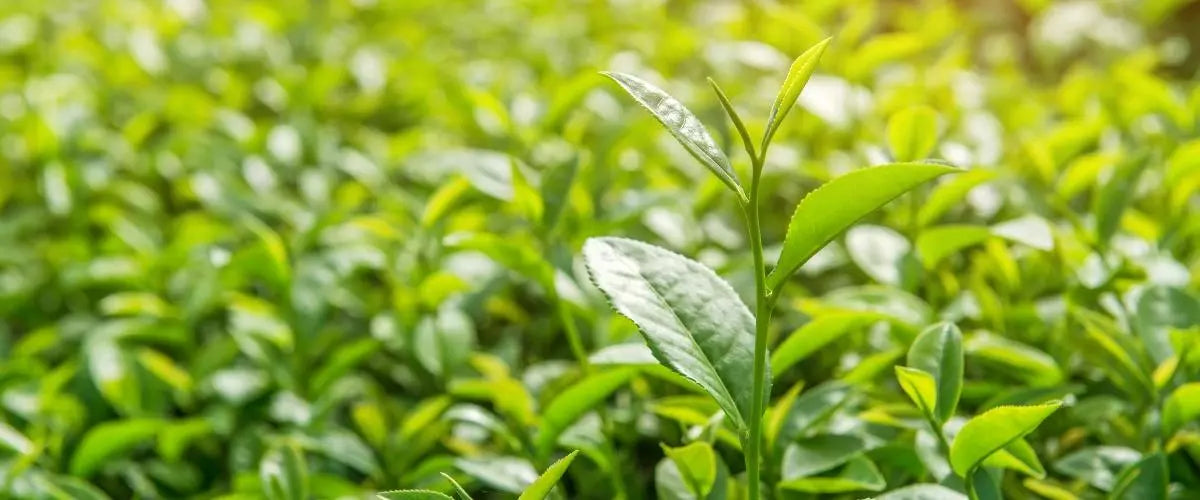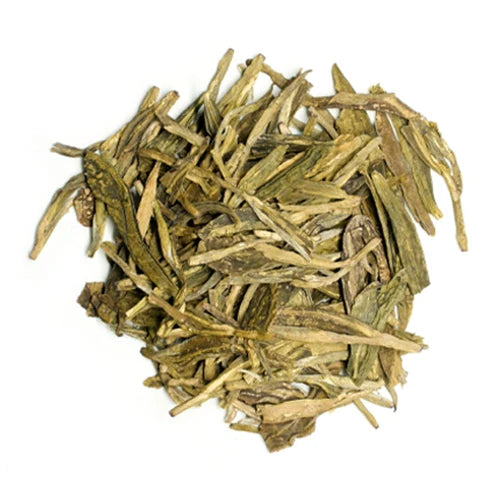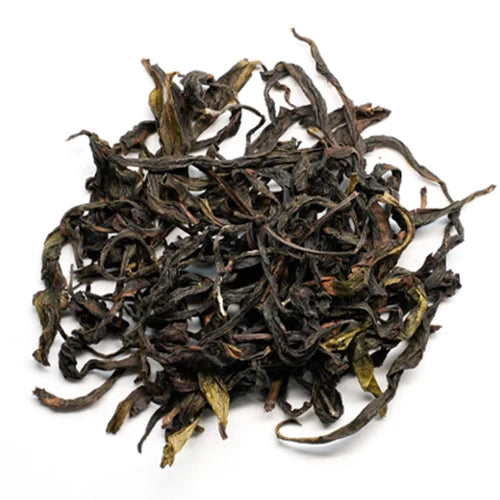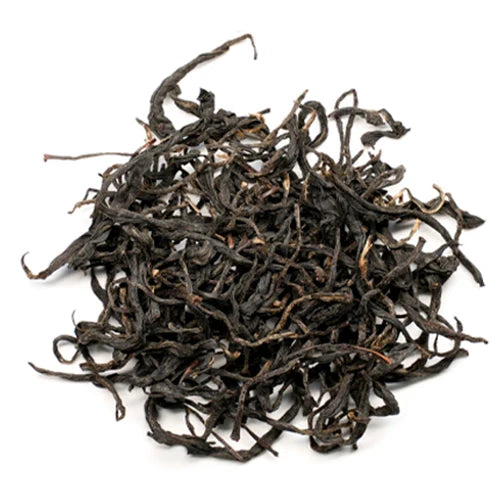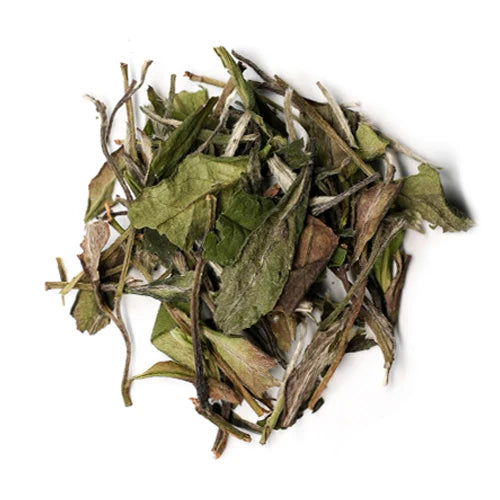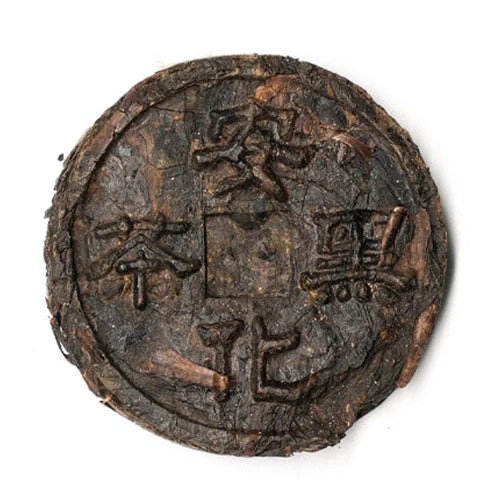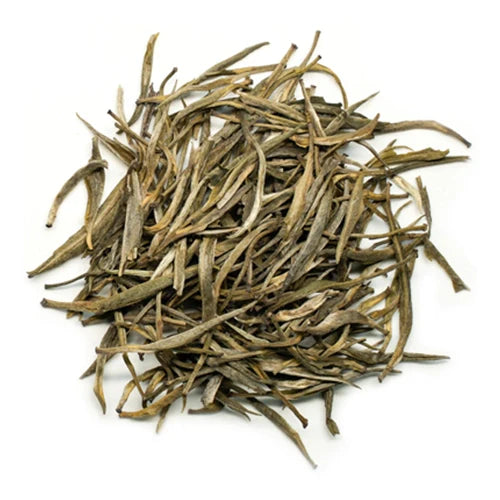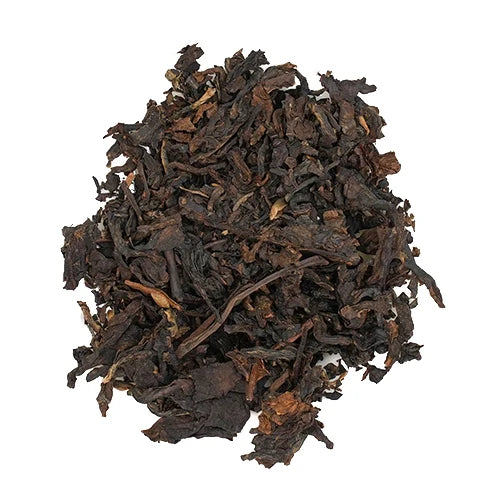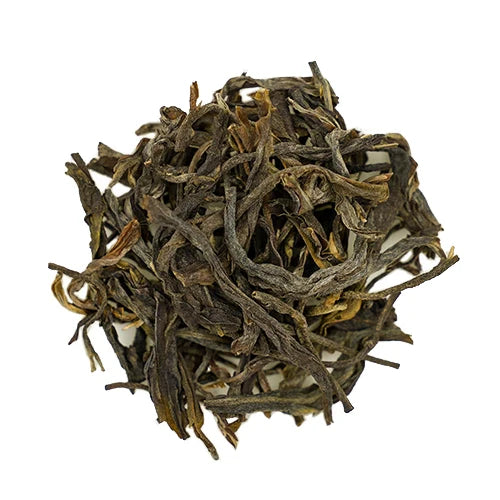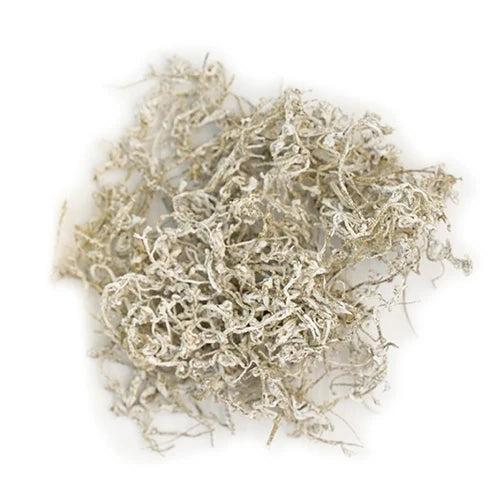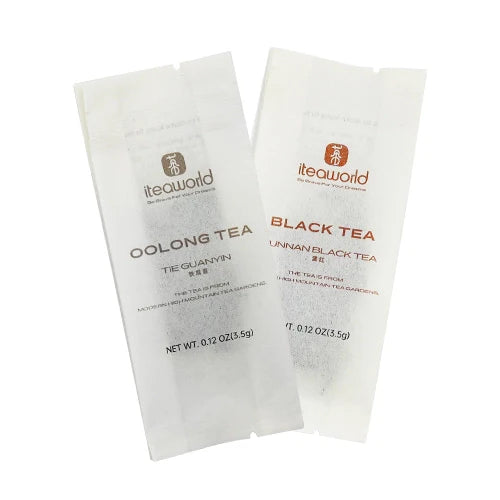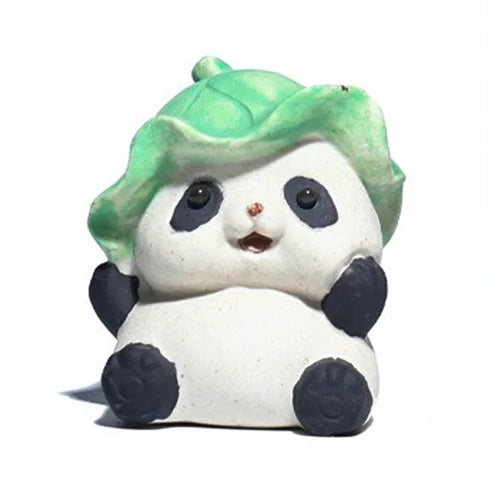Are you a tea enthusiast or just a beginner? Whether you're a seasoned tea drinker or new to the scene, you may have questions about loose leaf teas and tea bags. Some individuals like loose tea, while others prefer the convenience of tea bags. Both offer advantages and disadvantages, so how can you know which is best for you? As it turns out, the manner in which tea is brewed and packed has an effect on the drinking experience. Loose leaf tea has quality and flavor advantages that bagged tea may not always have. Continue reading to learn more about the distinctions between the two primary types of tea and to determine which one is ideal for your cup of tea.
What is Loose Leaf Tea?
Loose leaf tea refers to tea leaves that are not pre-packaged in tea bags. Unlike tea bags, loose leaf tea consists of whole tea leaves, allowing it to retain its flavor, aroma, and health benefits more effectively.
To steep loose leaf tea, various methods can be used, such as a steeping ball, infuser, French press, or strainer. These tools allow the tea leaves to infuse in hot water while keeping them contained for easy removal. What’s cool about this method is there’s much less waste than with bagged tea.
Loose leaf tea is typically sold in boxes or tins and offers a wider variety of tea options compared to tea bags. It allows tea enthusiasts to explore different tea varieties, origins, and flavor profiles. The larger tea leaves in loose leaf tea provide a more nuanced and satisfying tea-drinking experience.
What Are Tea Bags?
The invention of the tea bag is commonly credited to American tea merchant Thomas Sullivan in 1908. Seeking to break into the Indian and Sri Lankan tea export market, he experimented with small silk bags of tea that could easily be ejected after steeping. This novel "individual brewing" concept paved the way for mass adoption of tea bags in the West.
Modern tea bags are composed of filter paper and stapled at the top. The quality of paper determines how much flavor can penetrate during steeping. Many economical tea bags contain lower grades of paper which restrict flavor extraction.
As for the tea inside, both fannings and dust are frequently used rather than whole leaf cuttings due to lower costs. Fannings refer to broken tea particles whereas dust includes tea powder and small fragments. These finer particles tend to over-steep quickly and release bitter tannins which can affect taste.
While convenient and affordable, tea bag's use of fannings and dust limit quality considerably compared to whole leaf grades. Bagged varieties often rely on black tea buds and fermented teas which hold up better to packaging. Flavored tea bags may also incorporate roasted chicory or other non-tea additives as fillers.
Now that we have an overview of loose leaf tea and tea bags, next let’s dive into the specific differences between loose leaf tea and tea bags.
What's the Difference Between Loose Leaf Tea and Tea Bags
So, what's the difference between loose leaf tea and bagged tea? Simply described, it is the tea-drinking experience. The flavor and health benefits of each cup are influenced by the state of the tea leaves and the various packing methods. It's important to understand what you're purchasing and where to invest in order to obtain exactly what you want from your tea excursions. Here's the skinny:
1、Tea Leaves vs. Tea Dust: Leaf Size and Quality
After the leaves undergo harvesting, they undergo a meticulous sorting process categorizing them into full or whole leaf, broken leaf, and fannings. Subsequently, they are graded, processed, and packaged as loose tea leaves, sachets, or tea bags. The primary objective behind sorting and grading is to ensure uniform leaf size and prevent smaller tea pieces from influencing the flavor of full leaf teas. Generally, the price tends to increase with fuller leaves, but it's not a direct indication of poorer quality in smaller, broken leaf teas. It's crucial to note that a tea's taste, body, and steeping time vary based on the leaf's grade.
Various factors such as climate, location, harvest season, and processing methods significantly contribute to a tea's quality and final characteristics. The grading and quality standards differ across cultures and for different types of tea; there isn't a universal grading system to determine quality or desirability. For instance, breakfast teas like English Breakfast often incorporate smaller broken leaves to craft a full-bodied cup, while high mountain Taiwanese oolongs typically feature tightly-rolled full leaves that gradually unfurl in water, releasing smooth, fragrant flavors—a fascinating diversity, right?
Full or Whole Leaf
Whole leaf tea offers a wider range of complex and nuanced flavor profiles, usually accompanied by higher nutritional value. However, it doesn't inherently mean it's superior. Enthusiasts might extol the virtues of first flush, or initial harvest whole leaf teas for their superior nutritional content and flavor, but our aim is to present the facts. Full or whole leaf tea in loose form is a delightful experience, especially when one takes a moment to savor and appreciate the diverse flavors brewed. Observing the rolling technique used on the leaves, witnessing their unfurling during the brewing process, and ultimately experiencing the journey they bring to your cup can be quite relaxing. Best Loose leaf teas, such as those sourced by iTeaworld, prioritize quality, resulting in a delightful and satisfying tea-drinking experience.
Broken Leaf and Leaf Pieces
While broken leaf teas might lack the breadth of flavor found in whole leaf teas, they compensate with depth, producing a darker, bolder cup. They infuse faster than whole leaf teas and are ideal for blending with other herbs, spices, or fruits, ensuring consistency in size and weight for a well-integrated concoction. Silken pyramid sachets are suitable for broken leaf teas, allowing more room for expansion as the leaves steep.
Fannings and Dust
Leaf particles too small for broken leaf classification fall into fannings and dust (each with several grades). Fannings are finely broken leaf pieces with a coarse texture, while dust consists of even finer particles left after sorting higher grades. These are commonly used in standard tea bags due to their short steeping time and bold flavor. However, teas made from fannings and dust may yield a more astringent cup with less natural flavor. Often, their taste is derived from herbal inclusions or additives rather than the tea itself, resulting in reduced health properties compared to whole or broken leaf teas. Fannings brew quickly, ideal for a strong, rapidly flavored cup. Despite criticisms surrounding uncertainty over contents, fannings and dust were historically prevalent in U.S. tea consumption; however, the market is gradually diversifying to include more leaf varieties. While whole and broken leaf teas excite, fannings offer affordability, convenience, and unique flavors valuable in their own right.
Instant Tea Crystals
A rising star in the tea world is premium instant tea crystals. Unlike traditional steeping methods with loose leaves or bags, these crystals eliminate the waiting time by being pre-steeped, allowing for an instant cup of tea. This innovation caters to on-the-go tea lovers, offering convenience without compromising on taste. Though it deviates from the traditional steeping process, it's a convenient option for those seeking their daily tea fix in any situation.
2、Depth of Flavor and Aroma
One of the most significant differences between loose leaf tea and tea bags lies in the depth of flavor and aroma they offer. Loose leaf tea allows for the full expression of the tea leaves' characteristics. The whole leaves unfurl during steeping, releasing their flavors and aromas gradually. This slow infusion process results in a rich and multidimensional cup of tea that captivates the senses. On the other hand, tea bags often contain broken or finely ground tea leaves, which can limit the infusion process and lead to a more subdued and one-dimensional flavor profile.
3、Room to Brew: Infusion Space
The amount of space available for tea leaves to expand and infuse is crucial in extracting the optimal flavors from the tea. Tea bags are often tightly packed, leaving little room for the tea leaves to expand fully. This limited space can impede the release of flavors and result in a weaker or less robust cup of tea. In contrast, loose leaf teas have ample room to unfurl and infuse in the water, allowing for a more complete extraction of flavors and a more satisfying tea-drinking experience.
4、Brewing Methods and Rituals
The brewing methods for loose leaf tea and tea bags differ slightly. Tea bags offer convenience and simplicity, requiring only hot water and a cup. You can quickly steep a tea bag, making it suitable for on-the-go or time-constrained situations. Loose leaf tea, while requiring a bit more effort, offers a rewarding and immersive brewing experience. Using a tea infuser, teapot, or even a paper tea filter, loose leaf tea allows you to appreciate the ritual of tea-making, from measuring the leaves to watching them unfurl and infuse in the water. This process can be meditative and add to the overall enjoyment of the tea.
5、 Diversity of Tea Varieties
Loose leaf tea definitely shines when it comes to the variety of tea varietals. When compared to tea bags, loose leaf tea offers a substantially wider variety of possibilities. The world of loose leaf tea is vast, with each having its own distinct qualities, flavors, and cultural importance. How do I choose which tea to drink? The following are some examples of popular tea varietals.
Black Tea
Black tea is one of the most widely consumed types of tea. It undergoes a complete oxidation process, resulting in a robust and full-bodied flavor. Within the realm of loose leaf black tea, you can find various sub-varieties such as Assam, Darjeeling, Ceylon, Keemun, and Earl Grey. These teas offer distinct profiles, from malty and bold to floral and aromatic.
Green Tea
Green tea is known for its refreshing and delicate taste. It undergoes minimal oxidation, preserving its natural antioxidants and vibrant green color. Popular loose leaf green tea varieties include Sencha, Dragon Well (Longjing), Matcha, Gunpowder, and Jasmine tea. Each of these teas offers its own unique flavor profile, ranging from grassy and vegetal to floral and sweet. If you want to try loose leaf green tea, a green tea sampler is a good place to start. Longjing、Biluochun、Huangshan Maofeng、Enshi Jade Dew、Jasmine Green Tea and Old Tree Green Tea are among the best Chinese loose leaf green teas in our green tea sampler.
Oolong Tea
Oolong tea falls between green and black tea in terms of oxidation. It offers a diverse range of flavors and aromas, often characterized by a smooth and complex profile. Some well-known oolong tea varieties include Tie Guan Yin, Da Hong Pao, Dong Ding, and Oriental Beauty. Each oolong tea has its own processing method and terroir, resulting in nuanced flavors that can range from fruity and floral to toasty and creamy.
White Tea
White tea is prized for its delicate and subtle flavors. It is made from young tea buds and leaves that undergo minimal processing. White tea varieties such as Silver Needle (Baihao Yinzhen) and White Peony (Bai Mudan) offer a light and airy cup with notes of floral, melon, and honey.
Whether you're a tea aficionado or new to the world of tea, the diverse range of loose leaf teas ensures that there's always something new and exciting to try, expanding your palate and enriching your tea-drinking experience. If you are looking for different premium Chinese tea varieties, iTeaworld tea sampler is your choice.
6、 Benefits of Loose Leaf Tea vs. Tea Bags
Tea is renowned for its numerous health benefits and nutritional value. Loose leaf tea, with its higher quality and larger tea leaves, generally contains more concentrated amounts of beneficial compounds and antioxidants compared to tea bags. These compounds contribute to a range of health benefits, including immune support, stress relief, soothing sore throats improved digestion, and heart health. While tea bags still offer some health benefits, the lower quality and limited space for the tea leaves to infuse may result in a slightly lower concentration of these beneficial compounds.
What are the benefits of loose leaf tea?
All teas provide some level of antioxidants, vitamins, nutrients and have anti-bacterial properties. Different types of loose leaf tea offer specific health benefits. For example:
Black Tea: Supports digestion, heart health, energy levels, and immune system function.
Green Tea: Promotes memory, dental health, cancer prevention, and a healthy metabolism.
Herbal Tea: Provides benefits such as improved sleep, enhanced immune system function, and reduced inflammation, depending on the herbs used.
White Tea: Supports cholesterol management, reproductive health, weight loss, and brain health.
Pu-Erh Tea: Aids in blood pressure regulation, stress relief, weight management, and digestion.
Oolong Tea: Assists with diabetes management, reduces inflammation, supports weight loss, and promotes brain health.
Find more loose leaf oolong tea with our oolong tea sampler. >>>
7、Cost Considerations
Many people believe that loose leaf tea is always more expensive than tea bags. While loose leaf tea is slightly more expensive than tea bags from the grocery store, it is still quite inexpensive. In reality, when you consider the quality and flavor that loose leaf tea gives, it is a great value for money.
Let's take a closer look at the cost comparison. For example, let's say you purchase a $14 bag of loose leaf tea. This bag can make up to 40 cups of tea, which means that each cup costs approximately 35 cents. When you break it down like this, you can see that loose leaf tea is quite affordable, especially when compared to other beverages or specialty drinks.
Furthermore, loose leaf tea has the advantage of being able to be steeped multiple times without compromising its flavor. This means that you can get multiple cups of tea from a single serving of loose leaf tea. The leaves can often be reinfused, allowing you to extract more flavor and enjoyment from the same batch of tea leaves. This ability to re-steep the leaves significantly extends the value of loose leaf tea and makes it more cost-effective in the long run. Tea bags, on the other hand, are typically designed for a single use and do not offer the same potential for multiple infusions.
To sum up, the differences between loose leaf tea and tea bags can be summarized as follows:
Pros of Loose Leaf Tea:
Superior quality and complex flavors.
Rich flavor and aromatic experience.
Higher concentrations of health benefits.
Multiple infusions for extended tea-drinking.
Wide variety for exploration.
Enjoyable brewing ritual.
Cons of Loose Leaf Tea:
Takes a few more steps to prepare.
sometimes cost more than tea bags.
Additional brewing equipment required.
Longer steeping time.
Pros of Tea Bags:
Convenience and ease of use.
Portability for on-the-go tea drinking.
Quick brewing time.
Cost-effective option.
Cons of Tea Bags:
Lower quality compared to loose leaf tea.
Limited flavor profile and depth.
Fewer health benefits.
Less variety in tea options.
Single-use and cannot be reinfused.
So, why not embark on a journey of exploration and elevate your tea-drinking experience with the delights of loose leaf tea?
What to Look for When Buying Tea?
When it comes to buying tea, there are a few key factors to consider in order to ensure that you are getting a high-quality product that suits your preferences. Here are some points to keep in mind:
1、Source and Origin
Look for teas that are sourced and grown with care. Consider the country or region of origin, as certain areas are renowned for producing specific types of tea. For example, dahongpao and tieguanyin from China are highly regarded.
2、Quality of Leaves
Just as we discussed different tea leaf shapes earlier, different tea leaf shapes have their own advantages, and you can choose based on your personal tastes. However, for a more realistic tea flavor, I recommend using whole leaves or large leaf fragments. Because when compared to tea dust or broken leaves, whole leaves or large leaf pieces are generally regarded superior quality.
3、Harvesting and Processing
The way the tea is harvested and processed can greatly impact its flavor and aroma. Hand-picked teas are often of higher quality as they preserve the integrity of the leaves. Additionally, teas that undergo proper processing techniques, such as withering, rolling, oxidation, or drying, can result in more nuanced flavors.
4、Flavor Profile
Taste is subjective, so choose teas that appeal to your palate. Consider whether you prefer bold and robust flavors or subtle and delicate notes. Read the product descriptions or consult with knowledgeable tea vendors to get an idea of the flavor profiles of different teas.
5、Organic and Ethical Considerations
If you prioritize organic or ethically sourced products, look for teas that are certified organic or sourced from sustainable and fair-trade practices. This ensures that the tea has been produced without the use of harmful chemicals and that the workers involved in its production are treated fairly.
6、Packaging
Loose Leaf Tea
Loose leaf tea refers to leaves packaged freely in a container. Whole leaf tea, broken leaf tea, and sometimes tea pieces are presented as loose leaf teas. Unlike tea bags, loose leaf tea requires an additional tool for steeping, such as a tea infuser. The key to brewing loose leaf tea is using a method that allows the leaves to fully expand!
Tea Bags
Tea bags are efficient, cost-effective, and convenient for transport. While they aren't ideal for re-steeping or for full leaf teas, they serve their purpose well. This is especially true for herbal blends, often cut and not needing room to expand, quick and bold cups of black tea, and rooibos blends.
Silken Pyramid Sachets
Silken pyramid sachets are a hybrid between loose tea leaves and tea bags, designed to offer a fuller steeping experience - more room for leaf pieces or whole leaves to expand and greater transparency, almost answering the question, "what's in that tea bag!?" Various options in pyramid silken sachets are available on shelves in the U.S., perfect for on-the-go or office steeping. Generally, broken pieces of tea leaves are packaged in sachets.
7、Price
While higher-priced teas can indicate quality, it's not always the case. As mentioned before, broken leaves or lower-grade teas can still offer enjoyable flavors at a more affordable price point. Consider your budget and strike a balance between quality and affordability.
At the end of the day, if they taste good, contain no artificial flavors, and don't leave your mouth dry, most teas are worth drinking. We love experiencing the leaf with loose leaf teas but also enjoy the convenience and value of using single-serving sachets and premium tea crystals. But When you want to look for carefully harvested and grown tea that is well processed, this may not always be the most expensive option. For example, choose iTeaworld loose leaf tea for your try.
A Personalized Guide to Brew Tea
Loose Leaf Tea vs. Tea Bags: How to brew them?
Here are some differences between brewing loose leaf tea and tea bags:
Loose Leaf Tea:
Use 1-2g of leaves per 6-8oz water
Warm teapot before steeping by rinsing with hot water
Add leaves to warmed teapot and pour freshly boiled water over
Steep 2-5 minutes depending on type, swirling occasionally
Remove leaves with a tea strainer or by pouring through a lidded pot
Can make successive brews of the same leaves
Tea Bags:
Use 1 tea bag for 6-8oz water
Place tea bag in empty mug/cup and pour water directly over
Steep for only 1-3 minutes to avoid over-steeping fragile particles
Remove tea bag with tongs or by discarding in cup
Cannot make successive brews from the same bag
The higher leaf-to-water ratio of loose leaf allows for better extraction of flavors and nutrients. Tea bags restrict this process and require shorter steeping to prevent bitterness from damaged bits over-steeping quickly. Loose leaf also offers more control over steeping variables and multiple infusions from a single serving.
FAQs:
What makes loose-leaf tea a greener choice than tea bags?
As per findings from The Tea Division, tea bags leave a significantly larger carbon footprint, estimated to be ten times greater than that of loose-leaf tea. While tea bags claim to be around 70% biodegradable, recent revelations have stirred concerns about their environmental impact.
In a revealing experiment showcased on the BBC's War on Plastic, researchers immersed tea bags in a solution aimed at dissolving everything except plastic. The results were startling, uncovering a hidden layer of plastic, known as polypropylene, in popular UK tea brands like Twinings, Tetley, and Yorkshire tea. This plastic component, persistent and resistant, takes centuries—potentially millennia—to fully degrade.
Contrarily, loose leaf tea presents a refreshing alternative devoid of such plastic residues. Its production doesn't involve the incorporation of plastics, ensuring your tea enjoyment is free from unnecessary plastic waste. Choosing loose leaf tea means relishing your cuppa with the peace of mind that your choice isn't contributing to the enduring presence of plastic in our environment.
Is loose leaf tea a healthier choice compared to tea bags?
Both loose leaf tea and tea bags offer various health benefits depending on the type of tea you prefer. Whether it's calming stress, bolstering immunity, aiding sleep, or providing a caffeine boost, teas possess diverse therapeutic properties. However, loose leaf tea often stands out for its higher quality, containing more concentrated amounts of these beneficial components.
Does loose leaf tea truly offer a superior taste experience?
Taste in tea is deeply personal, and there's no definitive right or wrong choice. Yet, when directly compared, loose leaf tea tends to offer a richer, more intricate flavor profile compared to tea bags. The nuanced taste and depth of character in loose leaf tea often outshine the more straightforward flavors of tea bags. Regular consumers of loose leaf tea might find it challenging to revert to tea bags after experiencing the elevated taste of high-quality loose leaf varieties.
How much loose leaf tea per cup?
If you want to drink loose leaf tea, how much loose leaf tea should you use every cup?
Usually, guidance on how to steep your loose leaf tea can be found on the packaging itself. As a general rule, you'll require about 1 to 2 teaspoons of loose leaf tea for every 8 ounces of water. This ratio ensures a balanced and flavorful brew.
Which contains more caffeine: tea bags or loose leaf tea?
The caffeine content in tea can vary based on several factors such as tea type, leaf size, steeping duration, and water temperature. Tea bags often consist of finely ground particles and fannings, potentially leading to a higher initial caffeine concentration compared to loose leaf tea. This is especially notable in the first brew. However, certain tea varieties like Irish Breakfast or Assam are inherently high in caffeine regardless of form.
What distinguishes a tea bag from a tea sachet?
Some tea brands offer tea sachets as an alternative to traditional tea bags. These sachets, often pyramid-shaped, feature superior quality tea leaves compared to standard tea bags. Similarly convenient, they eliminate the need for measuring or scooping tea leaves, allowing direct placement into the cup for steeping. While sachets offer added convenience, loose leaf tea tends to surpass both tea bags and sachets in terms of overall quality and flavor richness.

























